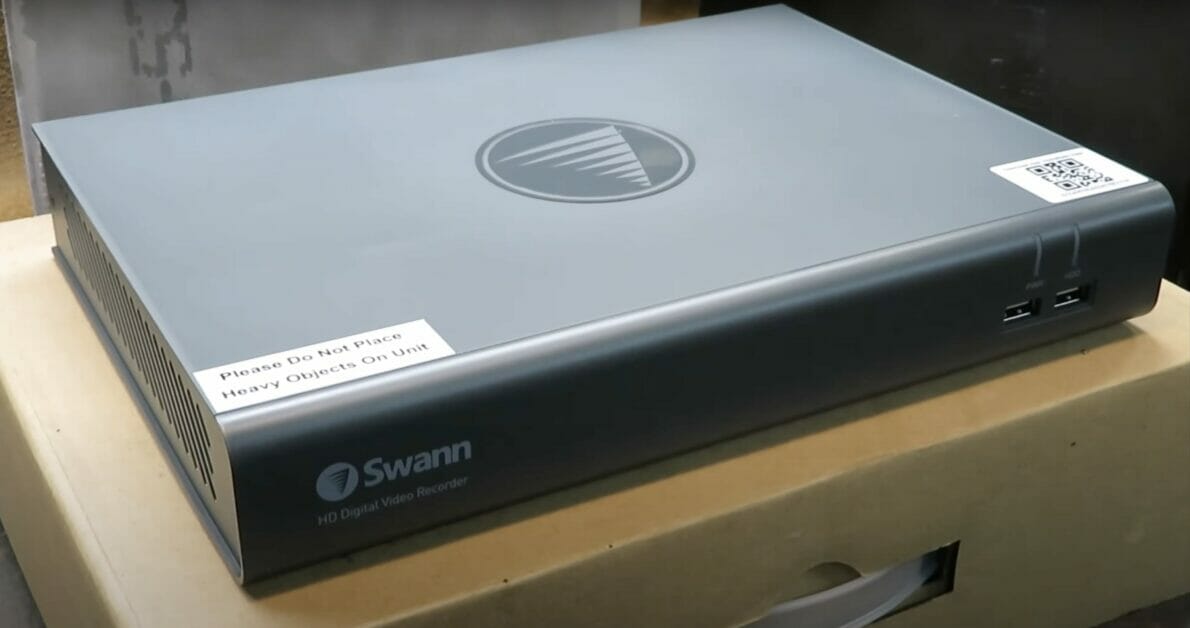Installing a CCTV system might give you peace of mind, but what about the camera’s DVR? Thinking about where to hide it can be a challenge, but don’t worry; I’ve got your back!
Ideal locations range from the attic and basement to inside walls or cabinets. Factors like accessibility, temperature, security, connectivity, and noise level are important considerations when selecting the DVR’s location. Various home layouts and family lifestyles are also considered, and I’ll share tailored solutions for each case.
You might even discover a few locations you hadn’t considered before!
Overview of Clever Spots to Hide Your DVR
| Location | Advantage | Consideration |
|---|---|---|
| Attic | Limited access and discreet location | Ensure that the temperature is not too high for the DVR |
| Ceiling | Stays inconspicuous | It might be difficult to access for maintenance or troubleshooting |
| Basement | Can offer extra security due to difficult access | Protect the DVR from possible moisture and flooding |
| Closet | Easily accessible and can be creatively hidden | Make sure to place it high or out of plain sight |
| Bookshelf | Looks natural and unsuspecting | The DVR should be carefully hidden behind books or within a specially designed book cover |
| Walls | It can be hidden in plain sight | Requires DIY skills for installation |
| Cabinet | It can be hidden along with other entertainment devices | Place it toward the back for added discretion |
Ideal DVR Locations
Attic
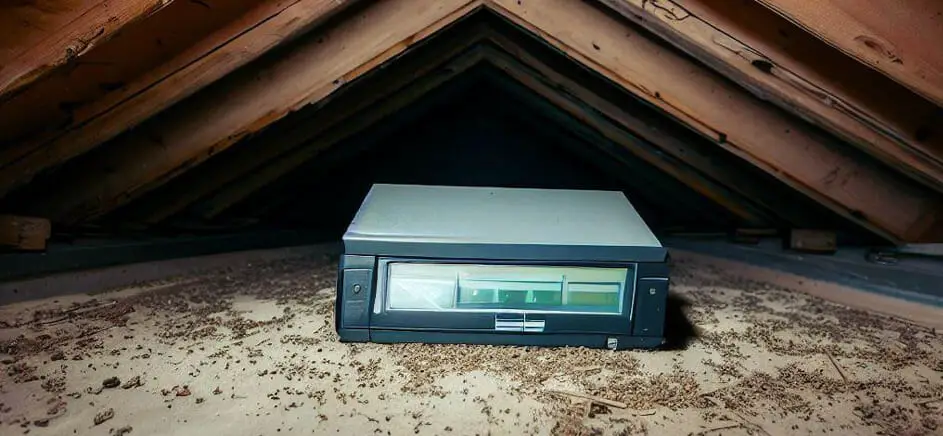
Ah, the attic! It’s one of those places where you wouldn’t normally think to look for a hidden DVR.
I’ve found it a great spot because of its limited access and discreet location. Simply tuck your DVR or NVR somewhere under the insulation or behind stored items, and voilà, it’s out of sight!
Ceiling

Another great place for hiding your DVR is the ceiling. Placing your security system in the upper reaches is even easier if you have a drop ceiling.
This might be a bit more challenging to access later on, but it sure does a great job of staying inconspicuous.
Basement
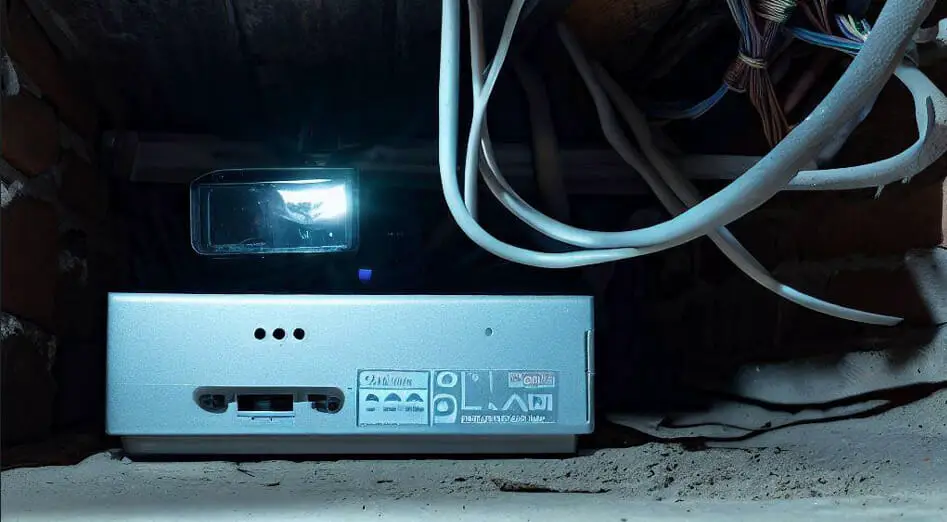
If you have a basement, I’d say it’s a prime location for securing your DVR. You can find a hidden nook, a safe box, or even build a dedicated locked room.
What I love about this spot is that it usually takes time for someone to access it, giving you additional security.
Closet
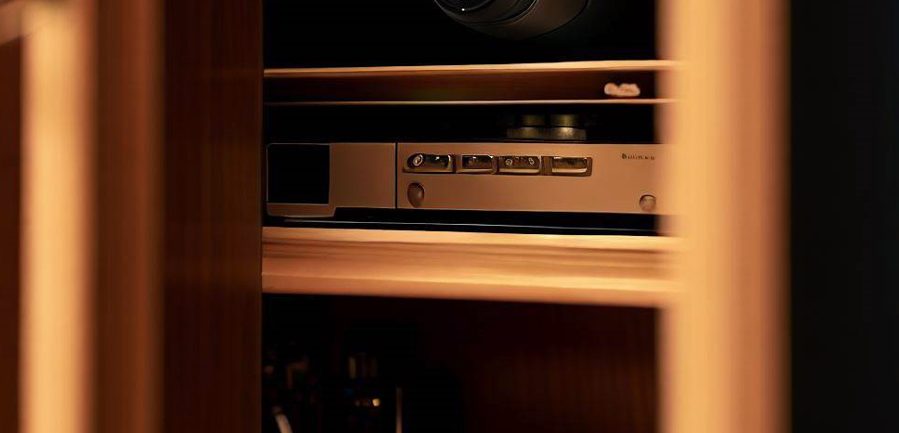
Do you have a walk-in closet or a utility closet? Don’t be afraid to get creative with it! I like placing my DVR on a high shelf or inside an obscure box.
It keeps the equipment secure and easier for me to access when needed.
Bookshelf
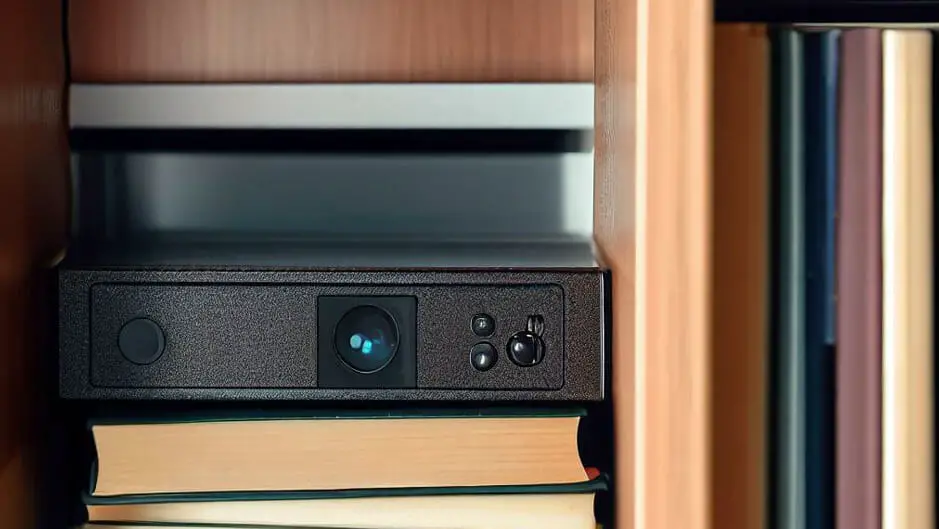
Books, beautiful books! Who would have thought they could be of help in hiding DVRs?
I’ve found that placing my security system behind a row of books or even within a specially designed book cover does the trick.
Walls
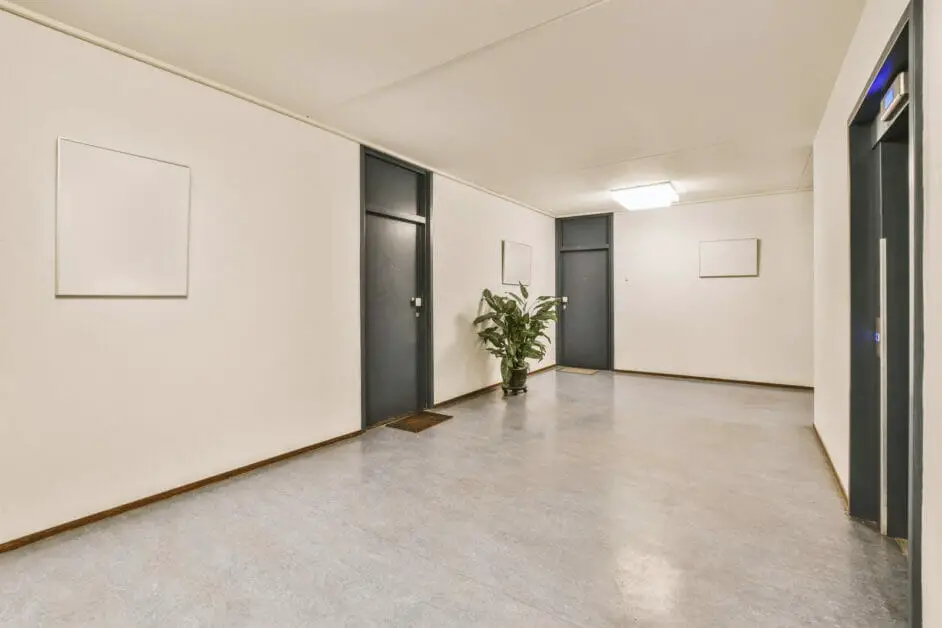
Hidden in plain sight. installing a DVR inside a wall, perhaps behind a painting, makes finding it exceptionally difficult.
Remember that you’ll need some DIY skills, but the unperturbed security it provides is worth the effort.
Cabinet
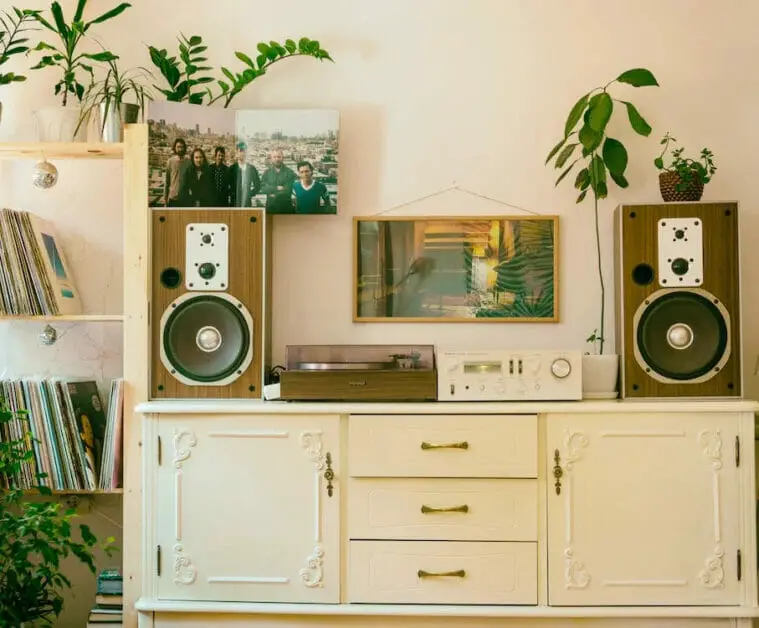
Last, but not least, consider hiding your DVR or NVR in a TV cabinet. Just imagine something so valuable tucked away next to your Blu-ray collection.
Be sure to place it toward the back of the cabinet for more discretion.
Remember, the key is to think outside the box and never underestimate the power of creativity!
Ideal DVR Location
Based on Family Lifestyle
| Family Lifestyle | Ideal DVR Location | Reason |
|---|---|---|
| Busy, Active Family | Utility room or garage | Less frequent interruptions, the potential for hidden spots among various equipment |
| Family with Young Children | Master bedroom or home office | Higher, out-of-reach spots reduce the risk of accidental discovery or tampering |
| Retirees | Living room or study | Easy access for regular monitoring and maintenance |
| Single Occupant | Bedroom or home office | Privacy allows for less hidden location, easy access for regular use |
| Work-from-Home Professionals | Home office, behind a bookshelf | Easy access during working hours, an opportunity to blend DVR with work equipment |
| Pet Owners | Living room, hidden in furniture | Avoid spots accessible to pets to prevent accidental damage |
| Frequent Travellers | Attic or basement | Less accessible locations provide added security during extended absences |
| Night Shift Workers | Bedroom, hidden in a closet | Less disruptive noise during sleeping hours, easy access during awake hours |
| Entertainment Enthusiasts | Home theater room, hidden with AV equipment | Opportunity to blend DVR with existing equipment, easy access during use |
| Fitness Conscious Family | Garage or home gym, hidden among exercise equipment | Less visited spots during non-workout hours provide added security |
Based on the Home Layout
| Home Layout | Ideal DVR Location | Reason |
|---|---|---|
| Open Plan | Hidden within the living room or kitchen furniture | Easy to access, can be camouflaged within the open space |
| Multiple Levels | Attic or basement | Provides a hidden and secure location away from main living areas |
| Compact Layout (small apartment, tiny house) | Hidden in a bookshelf or behind wall art | Space-saving options that blend with home decor |
| Long and Narrow | In a hallway closet or utility room | Central location helps manage cable lengths to different rooms |
| Large, Spacious Layout | In a dedicated home office or library | Offers ample space for secure and hidden setup |
| Bungalow | Hidden in bedroom or living room furniture | Single-floor setup allows for easy cable management |
| Studio Apartment | Under the bed or within kitchen cabinets | Space-saving options in a compact setting |
| Home with Basement | In the basement | Provides a hidden and secure location away from main living areas |
| Home with Attic | In the attic | Less accessible to potential intruders, providing added security |
| Loft-Style Home | On a high shelf or within a wall unit | Utilizes vertical space for hidden and secure setup |
Based on Home Type
| Home Type | Ideal DVR Location | Reason |
|---|---|---|
| Apartment | Hidden in bookshelf, Behind wall art | Limited space makes concealment within everyday items ideal |
| Detached House | Attic, Basement, Inside a wall | Larger space allows for more concealed and secure locations |
| Townhouse | Utility Closet, Inside a cabinet | Shared walls limit options, so interior hiding spots are ideal |
| Mobile Home | Under the bed, Inside a secured box | Space is limited, and mobility needs to be considered |
| Condo | Inside a fake wall vent, In a locked drawer | Since condos often have shared spaces, more creative concealment may be necessary |
| Farmhouse | Inside a barn or outbuilding, In the basement | Larger properties allow for more distant hiding places |
| Tiny Home | Behind wall panels, Under floorboards | Space is at a premium, so innovative hidden spots are ideal |
| Cabin/Log House | Inside a fireplace mantel, In the loft | The rustic design may allow for unique hiding places |
| Multi-story Building | Centralized utility room, Inside a false ceiling | Centralized locations help in managing long cable lengths |
| Office Building | Locked server room, Hidden ceiling space | Professional settings allow for more robust security measures |
Protecting DVR from Theft
Lockbox
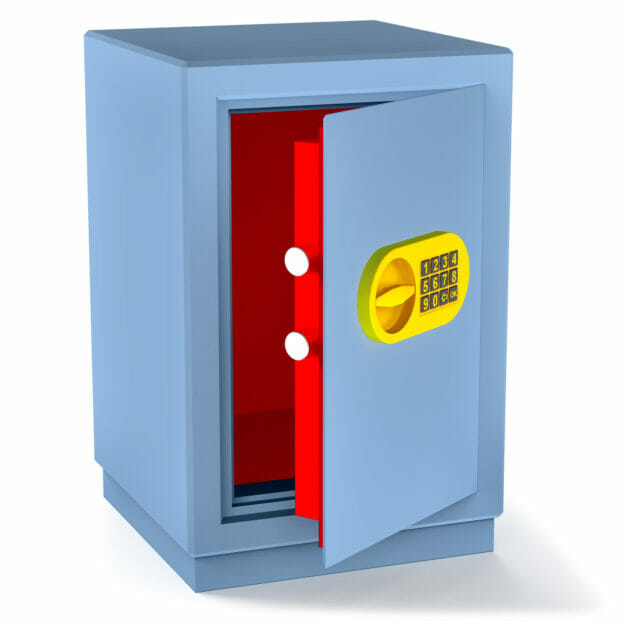
A lockbox is one of the best ways to protect your security camera DVR from theft. A lockbox is a sturdy metal container that houses your DVR, keeping it safe from burglars and vandalism.
I personally use a lock box to ensure my DVR is secure. It makes it difficult for thieves to access the device and deters them from attempting to steal it in the first place.
Locker
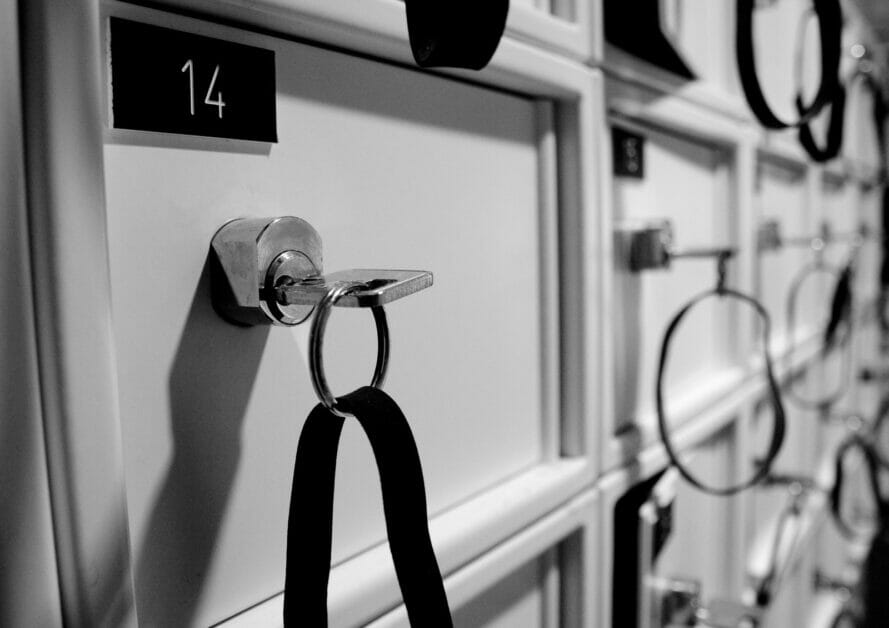
Another excellent option for securing your DVR is a locker. Like a lock box, a locker is a larger, more spacious storage enclosure designed to store and protect your DVR.
What I like about using a locker is that it provides ample space for organizing cables and additional equipment while keeping everything safe and secure.
Storage Enclosure
Finally, a storage enclosure is another method to consider for protecting your DVR. Storage enclosures can be anything from an attic or crawl space to a hidden compartment in your wall.
Being a bit more creative, I’ve even heard of people using a sock drawer as a covert hiding spot for their DVRs. The key here is to choose a less obvious location and less accessible to potential thieves.
When securing your DVR, it’s important to consider alarms and monitoring systems. These can alert you and the police if someone attempts to tamper with or steal your DVR.
Remember, the goal is to deter and prevent theft; every additional layer of security makes it much harder for a thief to succeed.
So whether you choose a lockbox, locker, or storage enclosure, remember that safeguarding your DVR is crucial to preserving your valuable security footage. Stay safe and happy hiding!
Factors to Consider When Selecting the Best Location for DVR
| Factor | Description | Considerations |
|---|---|---|
| Accessibility | Ease of reaching the DVR for maintenance, repairs, or to change settings | Consider locations that are not overly inconvenient to access |
| Ventilation and Temperature | DVRs generate heat, so it’s important to keep them cool | Choose a location that is well-ventilated and not subject to extreme temperatures |
| Security | Keeping the DVR safe from potential theft or tampering | Consider discrete locations or places that are hard to access without being noticed |
| Cabling and Connectivity | DVRs need to be connected to the cameras and the internet | Ensure the chosen location allows for proper cabling and has a strong internet connection |
| Noise Level | DVRs can generate noise while operating | If noise could be an issue, consider placing the DVR in a location where it won’t disturb people |
| Power Supply | DVRs need a reliable power source | Ensure that the chosen location is near a power outlet or arrange for a safe extension cord route |
| Future Maintenance | Allowing space and access for potential repairs or upgrades | Choose a location where potential future maintenance won’t be excessively difficult |
| Home Layout | The layout of your home may dictate the best spots for DVR installation | Ensure the chosen spot suits the overall layout and flow of your home |
Considerations for DVR Hiding Spots in Different Rooms
| Room | Considerations |
|---|---|
| Living Room | Accessibility, the possibility of camouflaging within decor, proximity to power outlets and internet connection |
| Bedroom | Potential noise from DVR operation during sleep hours, hidden spots in wardrobes or under bed |
| Kitchen | Potential heat and humidity, proximity to power outlets, the possibility of hiding within cabinets |
| Bathroom | High humidity and potential water damage risk, limited hiding spots |
| Attic | Extreme temperature changes, the potential for hidden and hard-to-reach spots, distance from the power supply and internet connection |
| Basement | Risk of flooding or dampness, hidden spots in unused corners or utility rooms, distance from the power supply and internet connection |
| Garage | Risk of temperature extremes and potential dust or debris, hidden spots in toolboxes or on high shelves |
| Home Office | Good accessibility, potential noise during work hours, an opportunity to hide within office furniture or equipment |
| Laundry Room | Risk of humidity, noise from appliances, the potential to hide within cabinets or utility closets |
| Kids Room | Risk of accidental discovery, potential noise during sleep hours, limited hiding spots |
| Outdoor Shed | Exposure to weather conditions, potential for hidden and hard-to-reach spots, need for power supply and internet connection extension |
| Home Theater | Good accessibility, potential noise during movie viewing, an opportunity to hide within AV equipment or furniture |
References
Organizations:
- Electronic Security Association. https://esaweb.org/
- Security Industry Association. https://www.securityindustry.org/
- ASIS International. https://www.asisonline.org/
Websites:
- Reolink Blog. https://reolink.com/blog/
- CCTV Camera World’s Blog. https://www.cctvcameraworld.com/blog/
Video Reference
Kevin Robinson

